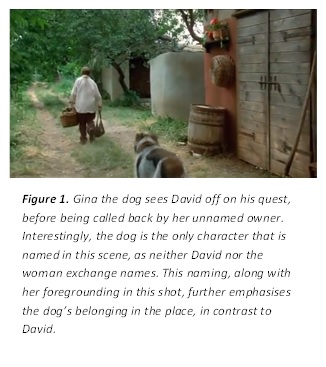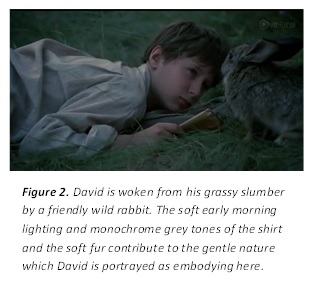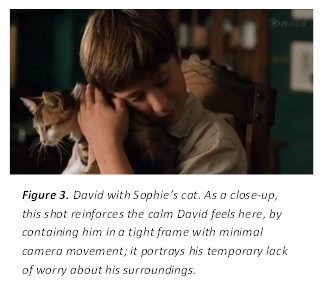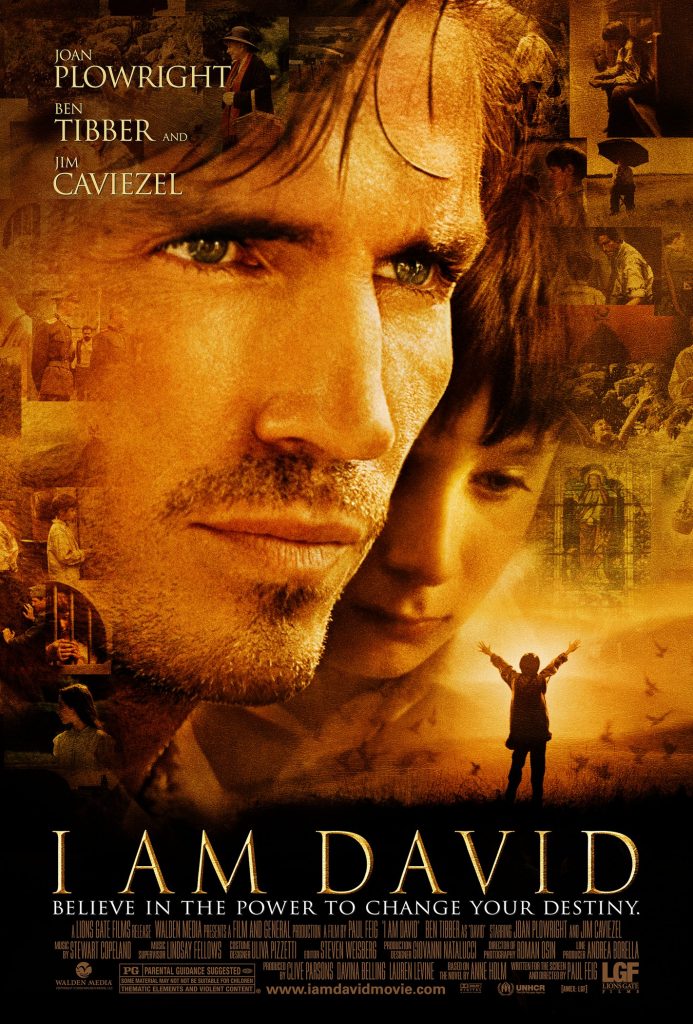I am David (2003) is a film adaptation of a children’s book of the same name by Anne Holm. The protagonist David must journey north alone after escaping a Bulgarian prison camp, in order to reach Denmark which he has been told is safe. As he is walking through a vineyard in Italy, he is startled by a dog which starts barking and chasing him. The dog in this scene acts as a hostile guardian of the territory through which David is passing. This is a good representation of the hostility and exclusion David feels from all the places he passes through, which he treats warily and with mistrust because of his fear of being noticed and recaptured. In contrast to David’s fear, the majority of the characters he meets are too busy to be much concerned with him, and employ him in various tasks, like the owner of the vineyard who gives him two Lire to deliver some wine, after calling her dog off him.
After the woman calls to David: ‘Now go! Go! Go! Go! Go! Go!’ to hurry him along, the dog barks seven times, matching the number of syllables in the woman’s command, creating the impression that the dog is reinforcing this sentiment with added aggression. When the woman calls for the dog to stop and David says ‘Ha!’, the dog barks once in reply and David runs away. Such a close mimicry draws a parallel between the dog and David as both distrustful and defensive, which emphasizes the discrepancy between the cause of David’s distrust being his displacement, and the dog’s as caused by his concern for his territory. David’s response to the dog’s bark also illustrates his skittishness and innocence, a trait which is elsewhere emphasized in the scene where he is woken in the forest by a wild rabbit.
Rabbits, as prey animals, are very non-threatening, so the rabbit’s comfort around David contributes to his portrayal as innocent and good in a world he perceives as very dangerous. The rabbit appears like a guide who David follows slowly behind, and is shown as part of a montage of natural imagery underneath a soundtrack of hopeful violins, which present it as part of the beautiful landscape that David observes without interference. Whilst only a short scene, this association of an escaping child with small herbivores such as rabbits is part of a larger trope in film. For instance in the film The Night of the Hunter (1955), two children escaping in a rowing boat float serenely down a river past various animals including rabbits, to non-diegetic violin music, which portrays the children as being gentle and thereby worthy of protection.
The scene with the dog is in opposition to David’s other major interaction with a domestic animal, which is the scene with a cat belonging to Sophie, the kindly painter who helps him cross the border into Switzerland. David picks up and holds the loudly purring cat which creates an atmosphere of homeliness and trust, extending its ease and belonging in the house to David. The dog, on the other hand, uses its own personal belonging as a guard dog to exclude and pursue him. The feeling of safety created by the cat leads David to agree to stay with Sophie overnight, which then in turn leads to him telling her who his mother is the next day. This atmosphere of belonging which convinces David to stay and leads to the film’s resolution, in which he boards a plane to Denmark, is a function of the cat, as a pet, being this creature which exudes belonging.
Bibliography:
Feig, Paul, dir., I am David (Lion’s Gate Films, 2003)
Laughton, Charles, dir., The Night of the Hunter (United Artists, 1955)



